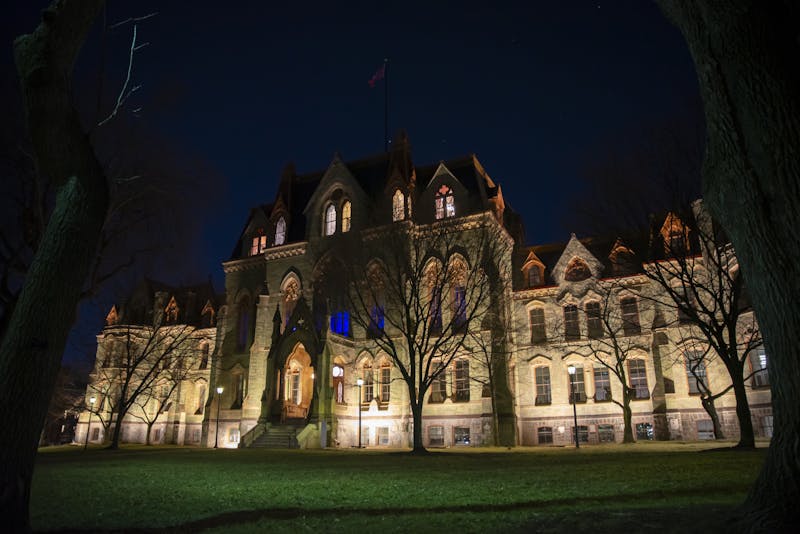
Even in the dead of winter, campus is getting greener.
Beginning in February, highly sophisticated sensors installed in 12 Harnwell rooms will monitor occupants' energy usage as part of the Harnwell Energy Monitoring Project, designed to promote awareness of conservation around campus.
Every six weeks, residents in the participating suites will upload data from the sensors onto their computers. The data will then be anonymously displayed to the public on monitors in the Harnwell lobby.
The residents will then be able to understand the amount of energy consumed by a small action, like turning on or off a light, explained Facilities communications specialist Andrew Zitcer.
The project is a collaborative effort between Facilities and Real Estate Services, Business Services and the Design School's TC Chan Center for Building Simulation and Energy Studies.
Funds for the project were donated by Wharton alumnus Gary Goldring and were matched by Facilities and Business Services.
Goldring came up with the idea from a similar project he saw at Oberlin College.
But unlike the Oberlin study, the Harnwell Energy Monitoring Project involves students, explained Ali Malkawi, founding director of the TC Chan Center and the principal investigator of Penn's version.
"Student participation is incredibly important," said Facilities project manager Khaled Tarabieh, explaining that with student involvement, the project becomes a study of behavior as well as numbers.
And students seem happy to participate.
"The cost of living in the city is so high, and the amount of energy used on a daily basis is ridiculous, so anything that can improve both of those situations I think is great," said College junior Kristin Brinkley, who is participating in the study.
Another participant, Wharton and Engineering sophomore Nicholas Stevens, said the project is a "step in the right direction."
Tarabieh described the project as being "in sync with the president's commitment," referring to the American College University Presidents Climate Commitment, a pledge that Penn President Amy Gutmann signed in February 2007 to reduce greenhouse gas emissions on campuses.
But the project coordinators' primary goal, according to Tarabieh, is to educate not just students, but the entire campus.
At the moment, administrators say they are waiting to evaluate the outcome of the Harnwell project before replicating it in other University buildings.
"Part of what we value about Penn's DNA is this spirit of innovation and entrepreneurship," said Zitcer. "It's about starting a project and not necessarily knowing where it will end."
The Daily Pennsylvanian is an independent, student-run newspaper. Please consider making a donation to support the coverage that shapes the University. Your generosity ensures a future of strong journalism at Penn.
DonatePlease note All comments are eligible for publication in The Daily Pennsylvanian.







